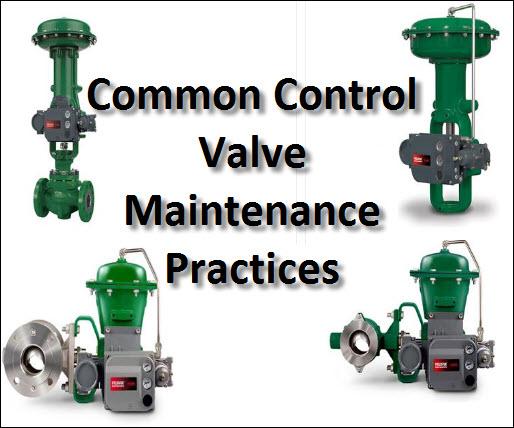Blog
3 Common Control Valve Maintenance Practices
3 Common Control Valve Maintenance Practices
July 17, 2018
The control valves are an integral device in oil and gas plants, fire prevention systems, power generation units, and various other applications. Also, they are one of the most overlooked devices in terms of maintenance. However, if not provided with proper maintenance, these units fail to operate to their maximum efficiency, which in turn leads to several performance issues. Although control valves are ruggedly built to withstand harsh conditions in the operating areas, they are prone to damage with several years of service. Here comes the significance of the proper maintenance practices and that is exactly what we are going to discuss in this post.

3 Approaches to Control Valve Maintenance
With proper care and maintenance, users can limit several operation- related problems and failures to a great extent. The following are the three commonly employed approaches to control valve maintenance.
- Reactive: Here, maintenance procedures start with the outbreak of a problem, or in other words action is taken after a problem has occurred. A few instances, wherein you need to run immediate reactive maintenance is when the valve leaks badly or fails to stroke. During reactive maintenance stage, the team immediately takes steps such as repairing or replacing the damaged parts, and thus regain the operational excellence of the valve.
- Preventive: This is the most advisable form of maintenance procedure. Here, a routine maintenance practice is conducted to detect any defect that may hinder the working of the valve in the near future. Thus, preventive maintenance helps avoid an expensive breakdown or accident in the future. Conducting preventive maintenance, not only keeps your valves working efficiently but also minimizes costly repairs.
- Predictive: Here, maintenance of the control valves is rendered on the basis of the evaluation results of monitoring and testing equipment. Using several diagnostic equipment like non-intrusive diagnostics, smart positioners, distributive control systems, and programmable logic controllers (PLCs), the performance of the valve, actuator, and controller is monitored. Immediate maintenance or repairing action is taken in case of any discrepancies.
It is said that prevention is better than cure. However, not everyone follow this saying when it comes to a mechanical equipment like control valve. It is not at all advisable to wait until the outbreak of a problem. Instead, conduct preventive and predicative maintenance than depending on reactive maintenance to uphold the performance of the valves without any downtime. Whatever maintenance program you choose, it is important to read the users’ manual of the respective model and stringently follow the manufacturer’s recommendations.
- Comparison between Multi Valve Manifolds Block Valves and Bleed Valves
- Understanding Electrochemical Detection: Principles, Techniques and Environmental Application
- How Can Greenhouse Gas Emissions Be Reduced?
- Pneumatic Pressure Controllers: A Safe Choice for Hazardous Areas
- A Practical Guide to Vacuum Measurement and Operation
- Understanding Electrochemical Detection: Principles, Techniques and Environmental Application
- How Can Greenhouse Gas Emissions Be Reduced?
- Pneumatic Pressure Controllers: A Safe Choice for Hazardous Areas
- A Practical Guide to Vacuum Measurement and Operation
- An Unconventional Guide to Selecting the Right Pressure Sensor
QUICK ENQUIRY